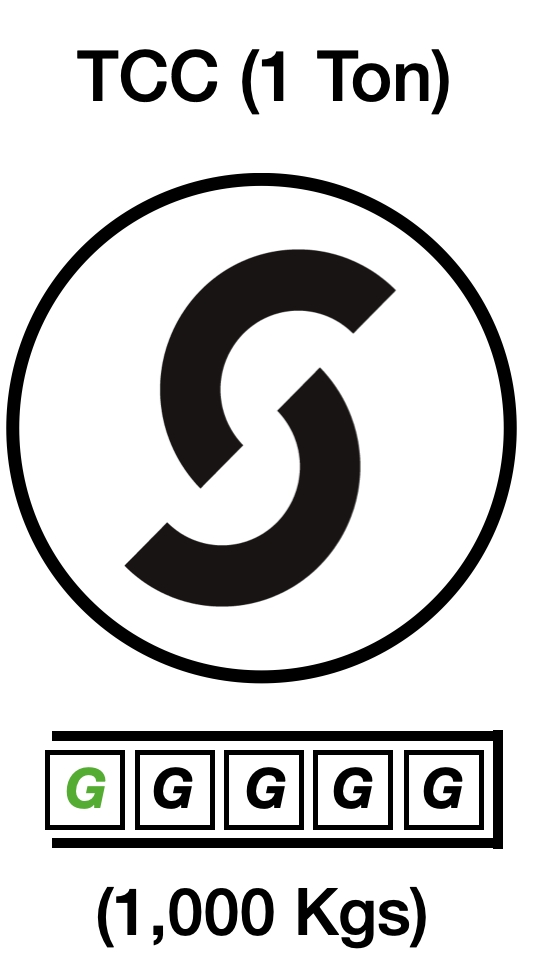Minting TCCs
Tokenized Carbon Credits are minted in 1 ton units of avoided CO2e emissions backed by GasIDs that total 1,000 Kgs in weight.
If a GasID is larger than 1,000 Kgs of CO2e then it will be split into 1 Ton units and a residual GasID will remain with the recycler. If GasIDs are smaller than 1 Ton then they will be packaged into a set totalling 1,000 Kgs, where the last GasID will likely need to be split. (For more detail see the end of the section on MassID splits.)

Note, the difference between a TCC and a TRC is that while TRCs package together MassIDs into 1 ton units; TCCs package GasIDs totaling 1 ton of prevented CO2 emissions through the recycling processes that certifiably reduce greenhouse gas emissions. For further clarification, see the formula comparison between the two equations in the Annex.
A TCC is noted in similar fashion to MassIDs and TRCs, using a location based identifier and a unique code to distinguish each token. Therefore, while the CO2e value of each TCC is the same in terms of weight (i.e. fungible) each one can be traced back to its original TRC and underlying MassIDs from the GasIDs that make up each TCC.

Last updated